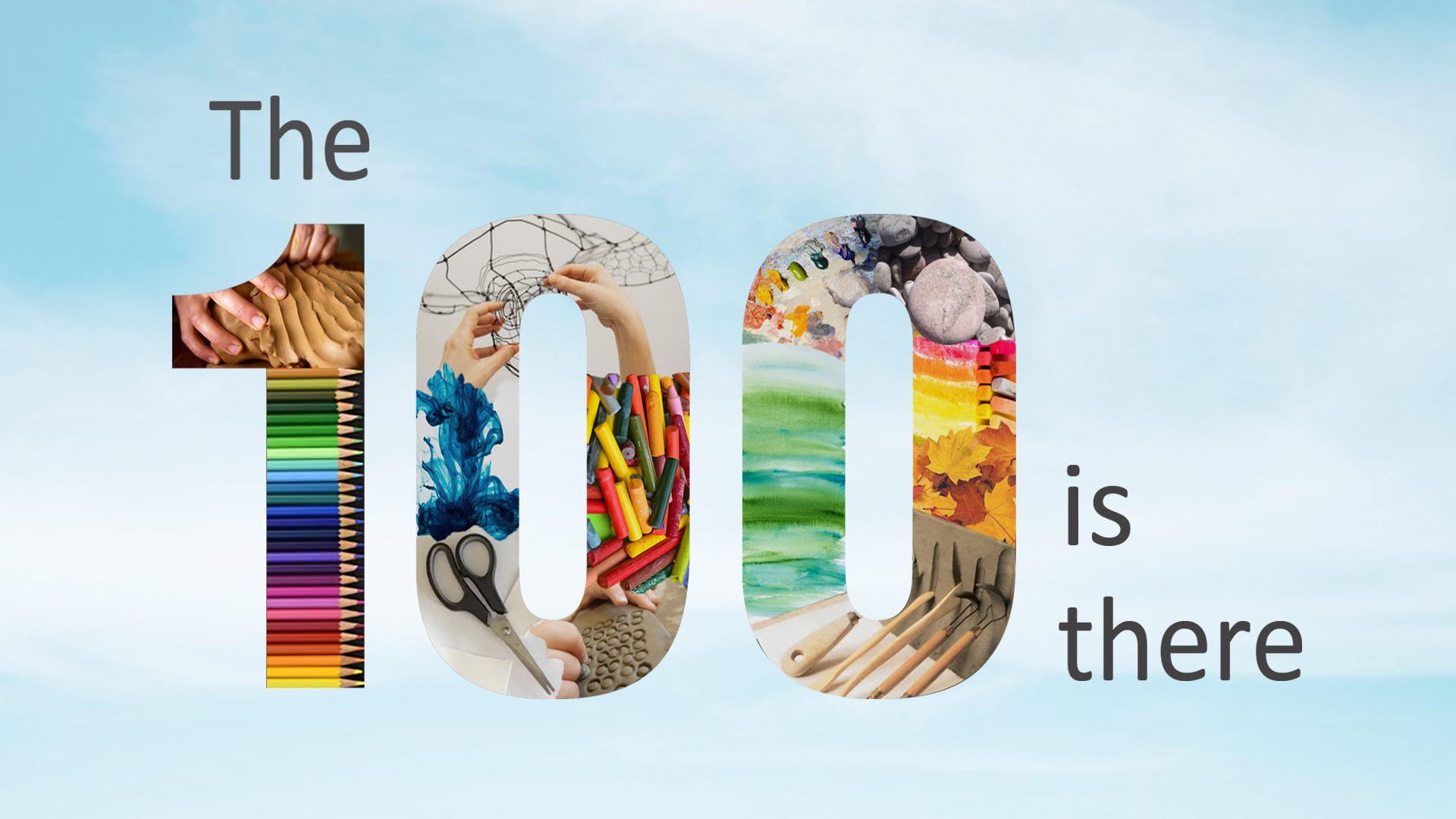レッジョエミリア教育の中核にある「100の言葉」という哲学は、子どもたちが多様な方法で自分を表現する能力を持っているという考えに基づいています。この哲学は、言葉だけではなく、絵や音楽、体の動き、遊びなどを通じて、子どもが自分の世界を自由に伝えることを大切にしています。
この理念は家庭でも簡単に取り入れることができ、子どもの創造性や自己表現力を豊かにする手助けになります。本記事では、「100の言葉」の哲学を家庭で実践するための具体的な方法を5つのポイントに分けて解説します。
1. 子どもの多様な表現方法を認める
「100の言葉」の哲学の基本は、子どもが言葉だけでなく多様な方法で考えや感情を表現できるということです。家庭では、子どもがどのように自分を表現するのかを観察し、その多様性を尊重しましょう。
実践方法
- 子どもの表現に注目する
子どもが絵を描く、歌を歌う、体を使って動きを表現するなどの行為を見逃さず、「面白いね」「これはどういう気持ち?」と声をかけます。 - 表現方法に制限をかけない
例えば、絵を描くときに「青空は青く描くもの」と決めつけず、子どもが自由に色を使えるようにしましょう。 - 表現に意味を求めすぎない
子どもの作品や行動に必ずしも大人が理解できる意味がなくても、それをそのまま受け入れる姿勢が大切です。
こうしたアプローチを取ることで、子どもは自由に自分を表現できると感じられるようになります。
2. 表現のための環境を整える
レッジョエミリア教育では、環境が子どもの学びと成長を大きくサポートすると考えられています。家庭でも、子どもがさまざまな方法で自分を表現できる環境を整えることが重要です。
環境作りのポイント
- アートスペースを用意する
色鉛筆、クレヨン、水彩絵の具、画用紙など、自由に使える画材をまとめて置くスペースを設けます。 - 音楽を楽しむ環境を作る
簡単な楽器(カスタネットやタンバリンなど)や、音楽を再生できるスピーカーを用意して、いつでも音楽と触れ合えるようにします。 - 自然素材を取り入れる
木の枝や葉っぱ、石、貝殻など、身近な自然の素材を使って創作活動ができるようにします。
豊かな環境が子どもの想像力や表現の幅を広げます。
3. 日常の中で表現の機会を増やす
表現活動は特別な時間だけでなく、日常の中でも取り入れることができます。子どもが自分の考えや感じたことを表現できる場面を意識的に作りましょう。
実践方法
- 親子で物語を作る
子どもと一緒に物語を作り、その物語を絵に描いたり、劇にしたりして楽しみます。 - 料理を表現の場にする
おにぎりの形を自由に作ったり、野菜をアートのように飾り付けたりすることで、料理を表現の活動に変えることができます。 - 日常の出来事を描かせる
「今日は何が一番楽しかった?」と聞き、それを絵や言葉で表現させることで、日常の体験が表現の素材になります。
日常の中で表現を意識することで、子どもは自分の考えや感情を伝える練習を重ねられます。
4. 質問を通じて深い表現を引き出す
レッジョエミリア教育では、教師や大人が子どもに質問を投げかけることで、子どもの考えや表現を深める役割を担っています。家庭でも、子どもの表現をさらに広げるための質問を活用しましょう。
効果的な質問例
- 具体的な部分に注目する
「この絵で一番気に入っているところはどこ?」
「この形は何を表しているの?」 - 感情に焦点を当てる
「この色を選んだのはどうして?」
「描いているとき、どんな気持ちだった?」 - 次のステップを促す
「もっと大きな紙だったら何を描きたい?」
「次はどんな色を使ってみたい?」
質問を通じて、子どもが自分の表現を言語化したり、次のアイデアを考えたりする力を養えます。
5. 成果を共有し、喜びを分かち合う
「100の言葉」の哲学では、子どもの表現が共有され、評価されることで自己肯定感が育まれると考えられています。家庭でも、子どもの成果を家族で共有し、共に喜ぶ時間を作りましょう。
成果の共有方法
- 作品を展示する
子どもの絵や工作をリビングの壁や専用スペースに飾り、「家族のギャラリー」を作ります。 - 家族で発表会を開く
子どもが作った物語や歌、ダンスを家族の前で披露する場を設けます。 - 記録に残す
子どもの作品を写真や動画で記録し、後から振り返れるようにアルバムやデジタルデータとしてまとめます。
成果を共有することで、子どもは自分の表現に価値を感じ、さらに意欲的に取り組むようになります。
まとめ
レッジョエミリアの「100の言葉」の哲学を家庭で生かすための5つのポイントを以下にまとめました。
- 子どもの多様な表現方法を認める
- 表現のための環境を整える
- 日常の中で表現の機会を増やす
- 質問を通じて深い表現を引き出す
- 成果を共有し、喜びを分かち合う
これらの実践を通じて、子どもは自分の考えや感情を豊かに表現できるようになり、創造性や自己肯定感が育まれます。「100の言葉」の哲学を取り入れた子育てで、子どもと一緒に新しい発見や楽しさを共有してみてください。
How to Apply the Philosophy of Reggio Emilia’s “100 Languages” at Home
The philosophy of “100 Languages,” central to Reggio Emilia education, is based on the belief that children possess countless ways to express themselves. These methods go beyond verbal language and include drawing, music, movement, play, and more, allowing children to freely communicate their unique worlds.
This philosophy can easily be incorporated into family life to nurture your child’s creativity and self-expression. In this article, we outline five practical steps to apply the “100 Languages” philosophy at home.
1. Recognize the Diversity of Your Child’s Expression
The foundation of the “100 Languages” philosophy is that children can express their thoughts and feelings in various ways. At home, observe how your child communicates and respect their unique forms of expression.
Practical Strategies
- Pay attention to their expressions:
Whether your child draws, sings, or moves their body to express themselves, take notice and respond with phrases like, “That’s interesting” or “What were you feeling here?” - Avoid limiting their methods:
For example, when drawing, don’t insist that the sky must be blue—let your child use colors freely to express their vision. - Don’t over-interpret meaning:
Even if your child’s actions or creations seem unclear to you, accept them as they are without forcing explanations.
By fostering an accepting environment, children feel free to express themselves in their unique ways.
2. Create an Environment That Supports Expression
In Reggio Emilia education, the environment plays a crucial role in supporting children’s learning and growth. At home, creating a space that allows your child to explore different forms of expression is essential.
Tips for Setting Up the Environment
- Set up an art space:
Provide materials like crayons, colored pencils, watercolor paints, and paper in an accessible area where your child can create freely. - Make music accessible:
Offer simple instruments like tambourines or maracas, or set up a music player to allow your child to engage with sound and rhythm. - Incorporate natural materials:
Use items like twigs, leaves, stones, and shells for creative activities, bringing a natural element to their expression.
A well-prepared environment broadens your child’s imagination and encourages diverse forms of expression.
3. Integrate Expression into Daily Life
Expressive activities don’t have to be limited to specific times; they can be part of everyday life. Look for opportunities in daily routines to let your child express their ideas and feelings.
Practical Suggestions
- Create stories together:
Collaborate on a story with your child and turn it into drawings or a family play for added fun. - Turn cooking into an art activity:
Let your child shape rice balls creatively or decorate vegetables like a piece of art, transforming cooking into a form of expression. - Capture daily experiences:
Ask your child, “What was the most fun thing today?” and encourage them to draw or describe it, making daily life a source of creative inspiration.
Incorporating expression into everyday activities helps children practice conveying their thoughts and emotions.
4. Use Questions to Deepen Expression
In Reggio Emilia education, adults play a vital role by asking questions that help children reflect and expand on their expressions. At home, thoughtful questions can encourage your child to develop and articulate their ideas further.
Examples of Effective Questions
- Focus on specific details:
“What part of this drawing do you like the most?”
“What does this shape represent?” - Highlight emotions:
“Why did you choose this color?”
“How did you feel while making this?” - Encourage next steps:
“What would you draw on a larger piece of paper?”
“What colors would you like to try next?”
Through questions, children can verbalize their creative process and explore new ideas.
5. Share Achievements and Celebrate Together
The “100 Languages” philosophy emphasizes the importance of sharing children’s expressions and celebrating their efforts, which builds their self-esteem. At home, create opportunities to share your child’s work with the family and cherish their accomplishments together.
Ways to Celebrate Achievements
- Display their work:
Showcase your child’s drawings or crafts on a wall or a dedicated space, creating a “family gallery.” - Host a family presentation:
Allow your child to present their stories, songs, or dances to family members, making their efforts feel special. - Record their creations:
Document your child’s work with photos or videos and compile them into an album for future reflection.
Sharing their achievements helps children see the value in their expressions and encourages them to explore even further.
Conclusion
Here are five steps to apply the “100 Languages” philosophy of Reggio Emilia education at home:
- Recognize the diversity of your child’s expression.
- Create an environment that supports expression.
- Integrate expression into daily life.
- Use questions to deepen expression.
- Share achievements and celebrate together.
By following these practices, children can enrich their ability to express thoughts and emotions while developing creativity and self-esteem. Incorporate the “100 Languages” philosophy into your parenting to discover new joys and discoveries alongside your child.




コメント